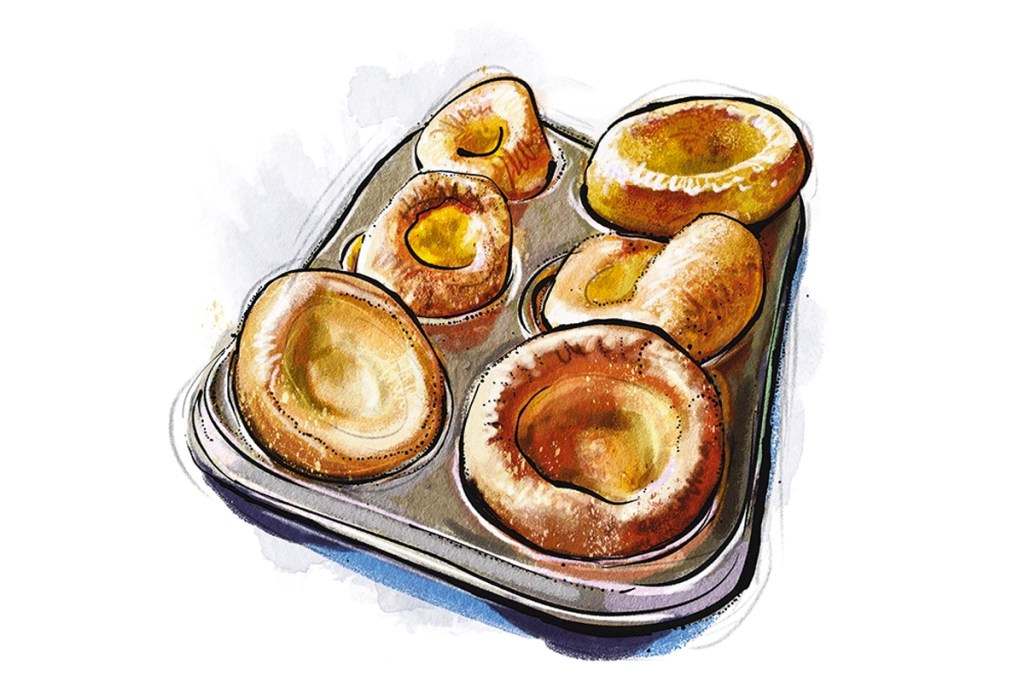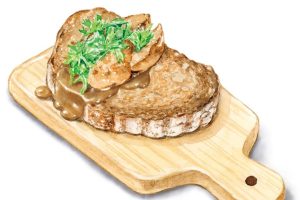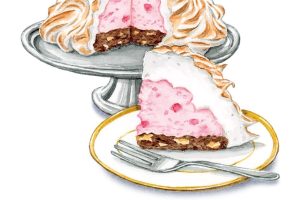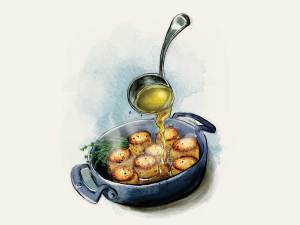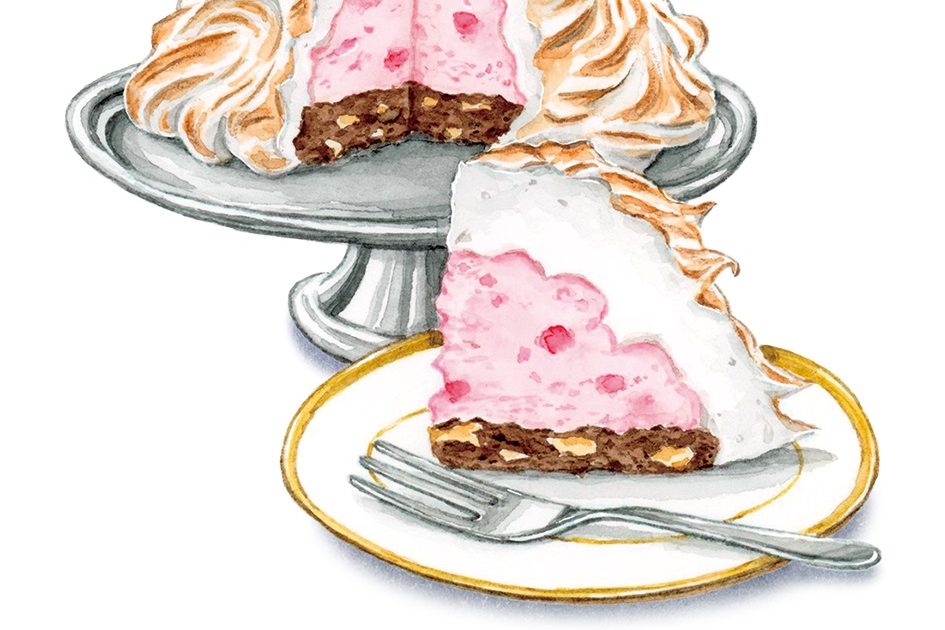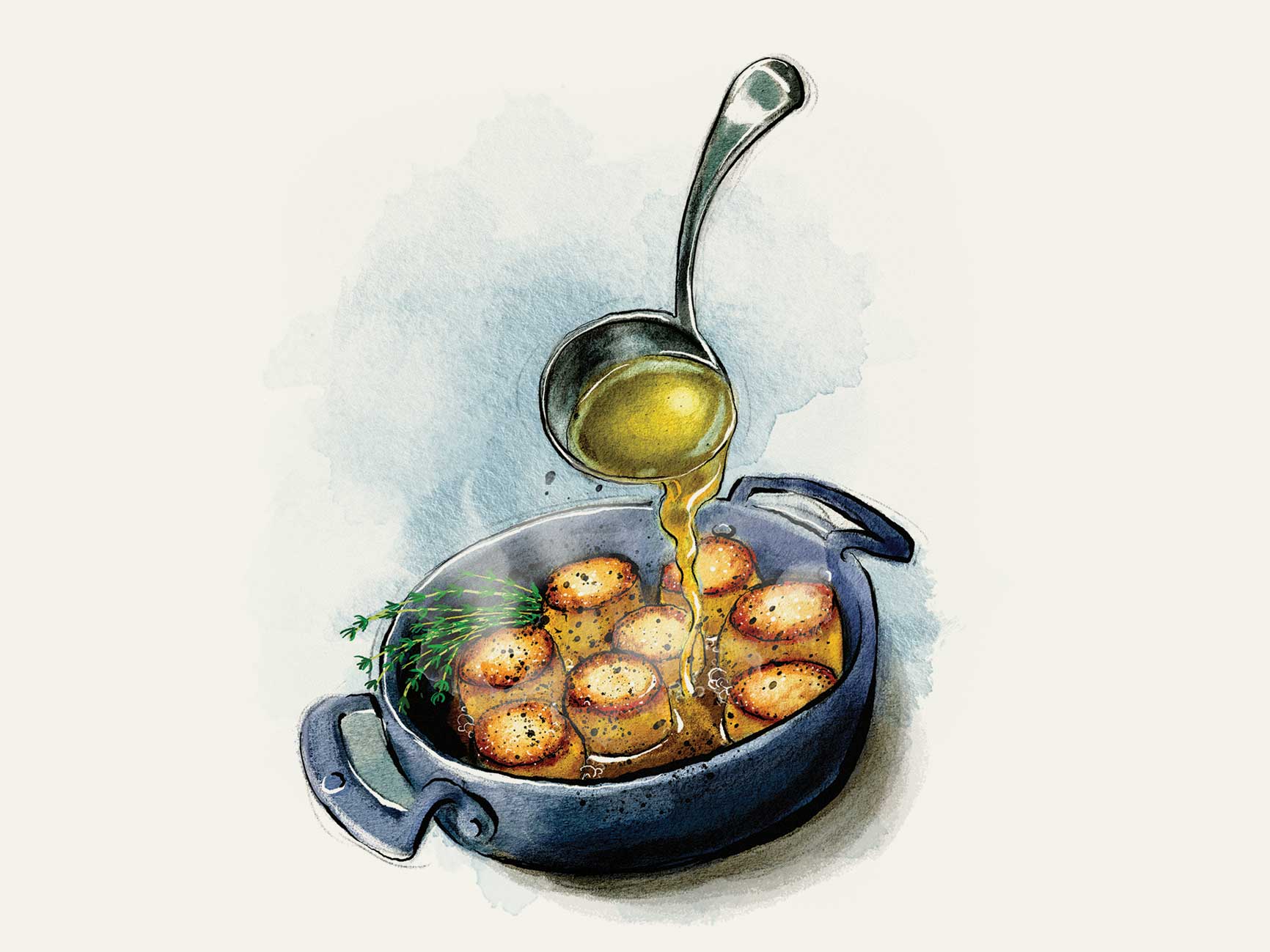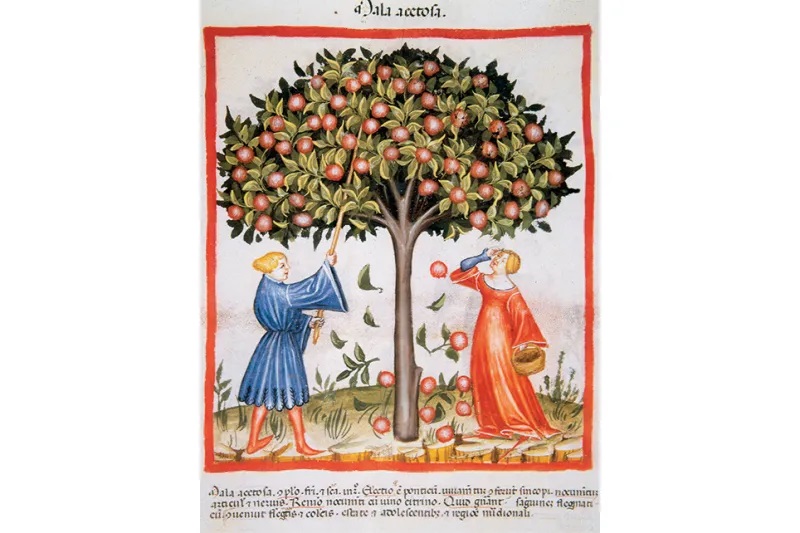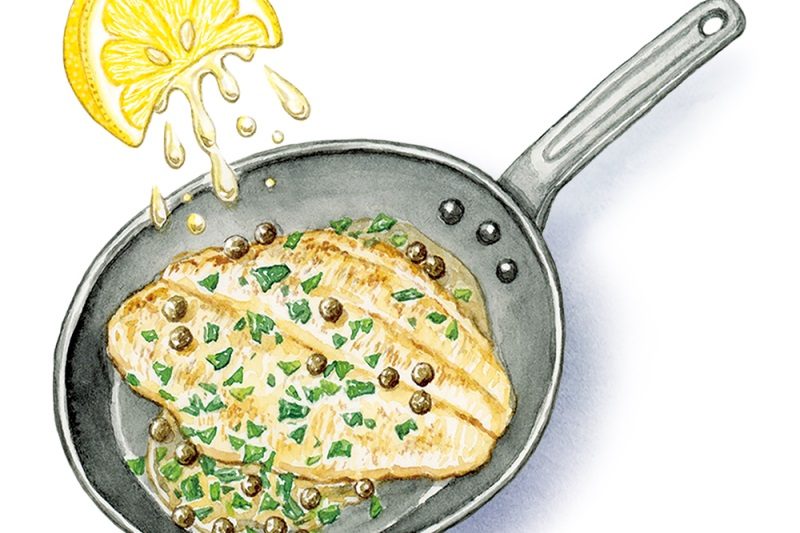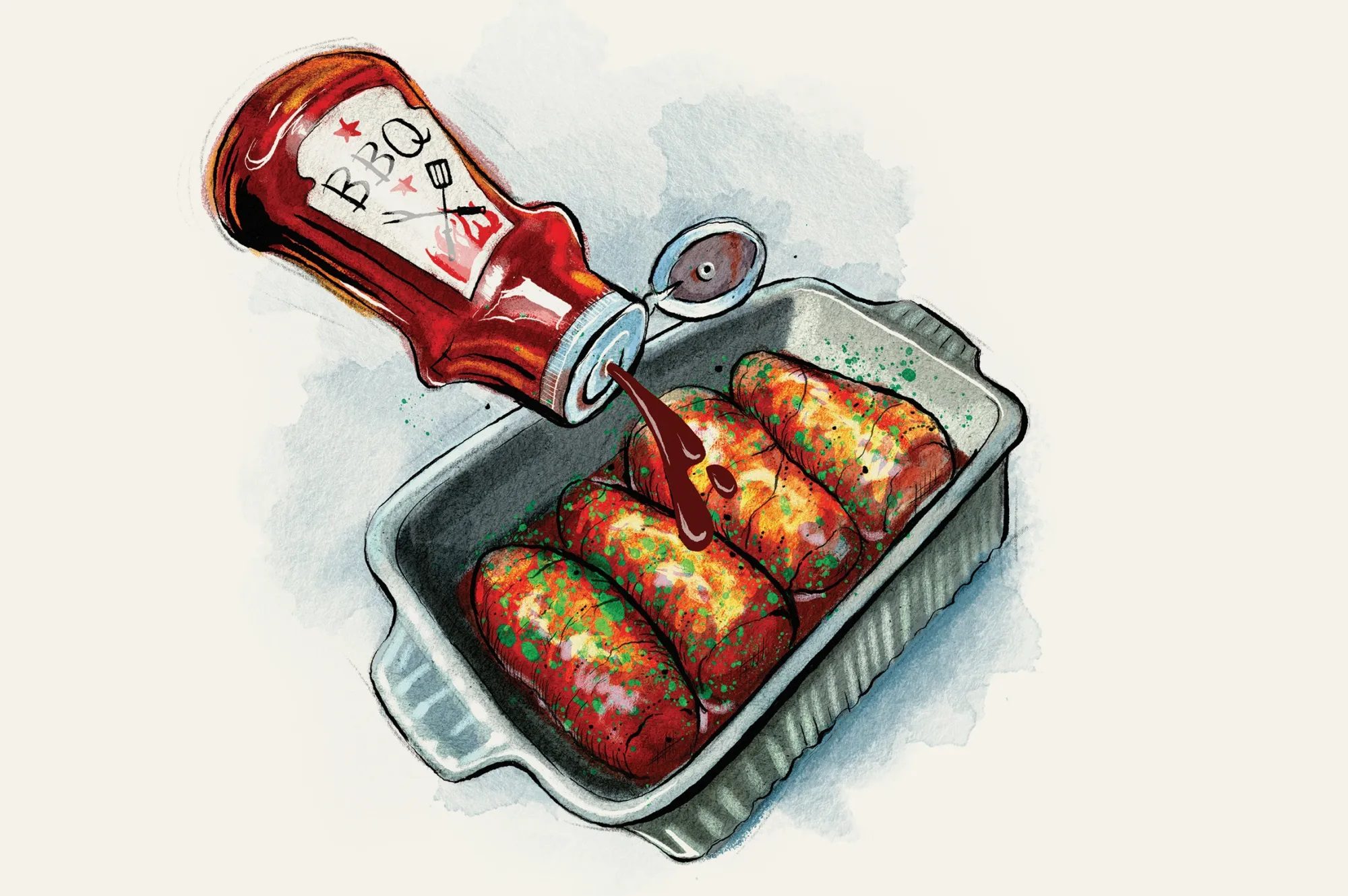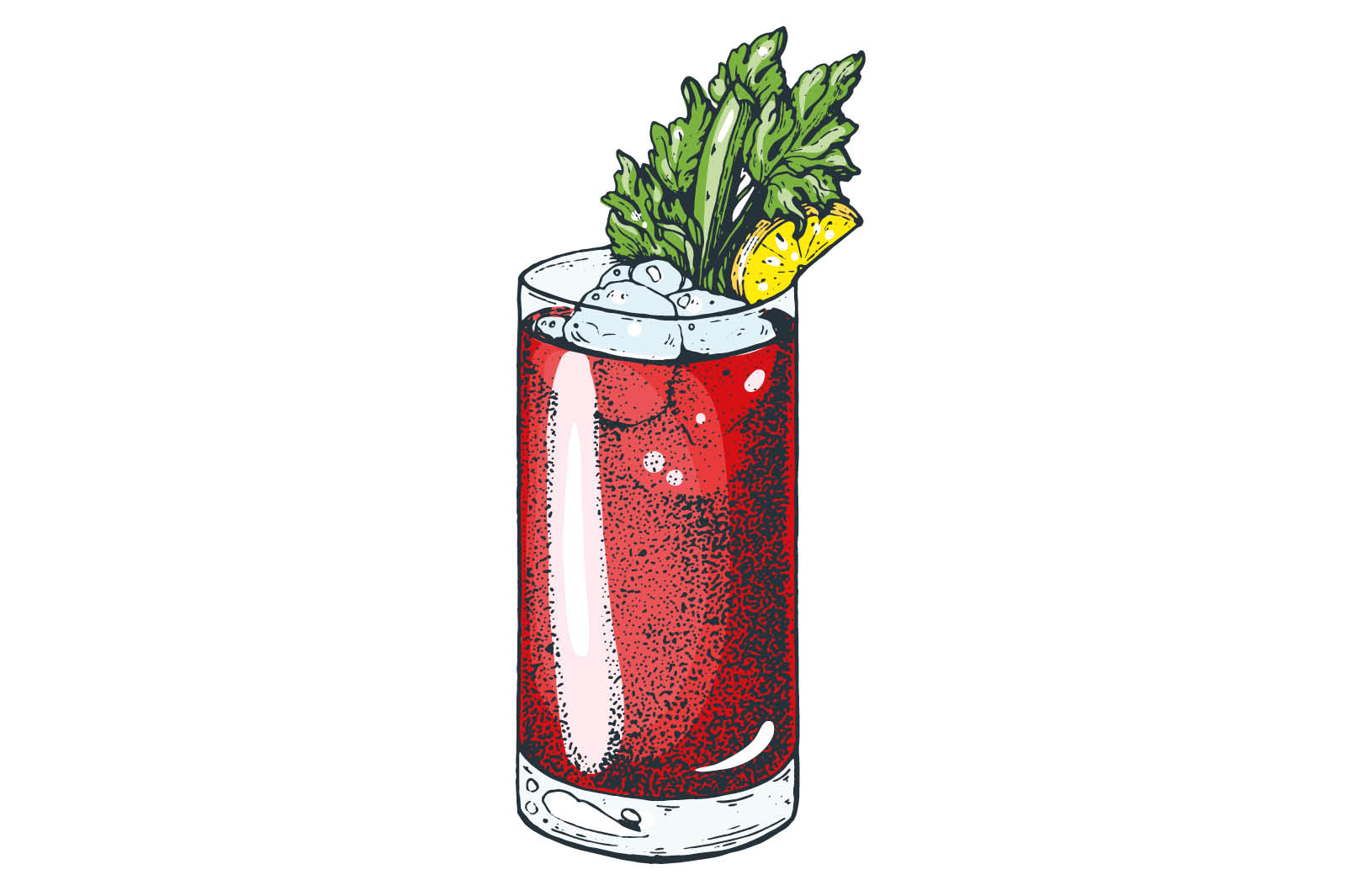My mother, a Yorkshirewoman, would occasionally take shortcuts in the kitchen, but not when it came to a roast, and certainly not when it concerned a Yorkshire pudding. She even owned a specific Tupperware shaker for the job: like a plastic cocktail shaker, in 1970s orange color, with a propellor insert, and a lidded pouring spout. The batter would be prepared in this shaker and handed to anyone foolish enough to pass through the kitchen, and woe betide anyone who stopped shaking before they were so instructed.
There are few things more satisfying than filling a perfect Yorkshire pudding with gravy
I didn’t inherit my mother’s Yorkshire pudding shaker, but I make do with a vigorous whisk and then a short rest. The batter is an incredibly simple one, made of eggs, flour, milk and sometimes water. Using water, or a mixture of water and milk, makes for a crisper, lighter pudding. But to my mind, if you’re going to call something a “pudding,” at least some of it needs to be a little squidgy in parts, and I love the richness that the milk brings. My Yorkshires are crisp and golden at the edges, but soft and luscious at their base.
The first written recipe for a “dripping pudding” was in 1737, although it is far older. The pudding would sit below the spit-roasted joint of meat, with the fat dripping on to it. In the mid-1700s, Hannah Glasse wrote about it as a Yorkshire pudding, but the Yorkshire connection is probably spurious. Yorkshire puddings are one of those things — a little like roast potatoes — that are taken very seriously by those who make them. I’m not sure anyone has ever made a Yorkshire pudding without declaring their method of cooking the one true way. But there is something almost all Yorkshire pudding aficionados agree on: the secret to a good rise is to pour the batter into screamingly hot fat. Whether you use vegetable oil or dripping, it should be put into the pan and preheated until smoking, so that the batter sizzles as it hits the hot, hot fat.
If the oil is hot, and the batter rested, the puddings should rise elegantly as they bake, before subsiding in the very center to provide a perfect receptacle for gravy. An impressive height is the mark of a good Yorkshire pudding, and in 2008 the Royal Society of Chemists decreed that “a Yorkshire pudding isn’t a Yorkshire pudding if it is less than four inches tall.” Quite literally a tall order.
Traditionally, the Yorkshire was served before the roast itself, with just the roasting juices or gravy from the meat. Supposedly this was to satisfy the appetite cheaply before the main event was served. So gravy has always been a non-negotiable part of the pudding experience. If I’m honest, that’s why I love Yorkshire puddings so much, because they’re really a vehicle for more gravy. There are few things more satisfying than filling a perfectly round pudding with gravy which softens the base and then floods on to the plate when you cut into it.
There are strong opinions, of course, about what roasts are appropriate for Yorkshire accompaniment. The received wisdom today seems to be that Yorkshires are essential with beef but an aberration with any other meat. (My husband is one of these tedious purists.) I say: nonsense. First of all, history is against you. The beef association is a recent one, with Yorkshires being a roast accompaniment for hundreds of years, and that very first published recipe for Yorkshire puds stipulated cooking them under a roasting mutton joint. And secondly, why deny yourself a Yorkshire pudding opportunity? You should have Yorkshire puddings with whatever your heart desires. Just make sure there’s plenty of gravy.
Makes 12
Takes 10 mins plus resting
Bakes 20 mins
– 8¾ oz plain flour
– 3 large eggs
– 10 fl oz whole milk
– ½ tsp fine salt
– 2 tbsp vegetable oil, dripping, or goose fat
- Stir together the flour and salt in a large bowl. Add the eggs along with about half of the milk, and stir with a whisk until combined. Add the rest of the milk and continue whisking vigorously until smooth. Set the batter to one side to rest for at least half an hour, and up to two hours
- Fifteen minutes before you’re ready to cook the puddings, once the meat is resting, turn your oven up as high as it will go, divide the fat between a twelve-hole muffin tin, and place in oven
- Give the batter a gentle stir and transfer to a jug. Remove the tin from the oven carefully and pour the batter into the muffin holes — the fat may spit (and should sizzle), so go gently
- Place the filled muffin pan in the oven and turn the temperature down to 430°F. Cook for twenty minutes until risen and golden, then serve immediately. The puddings should lift very easily from the pan
This article was originally published in The Spectator’s UK magazine. Subscribe to the World edition here.



